Bulbs are among the easiest and most rewarding of all garden plants. Spring, summer, and autumn flowering bulbs can bring sensational color to the garden. Most flowering bulbs are perennials. Planted once, most will bloom for several years, and many naturalize, meaning they produce offspring that will carry on for many additional years to come.
This post includes many bulbs that are long-time favorites of flower gardeners. It also includes some you may never have heard or planted. All are colorful and relatively long-lasting bloomers.
At the end of this post you will find bulb planting and care tips that will ensure you get several seasons of colorful blooms from each of these picks.
15 Flowering Bulbs for Spring, Summer, and Autumn
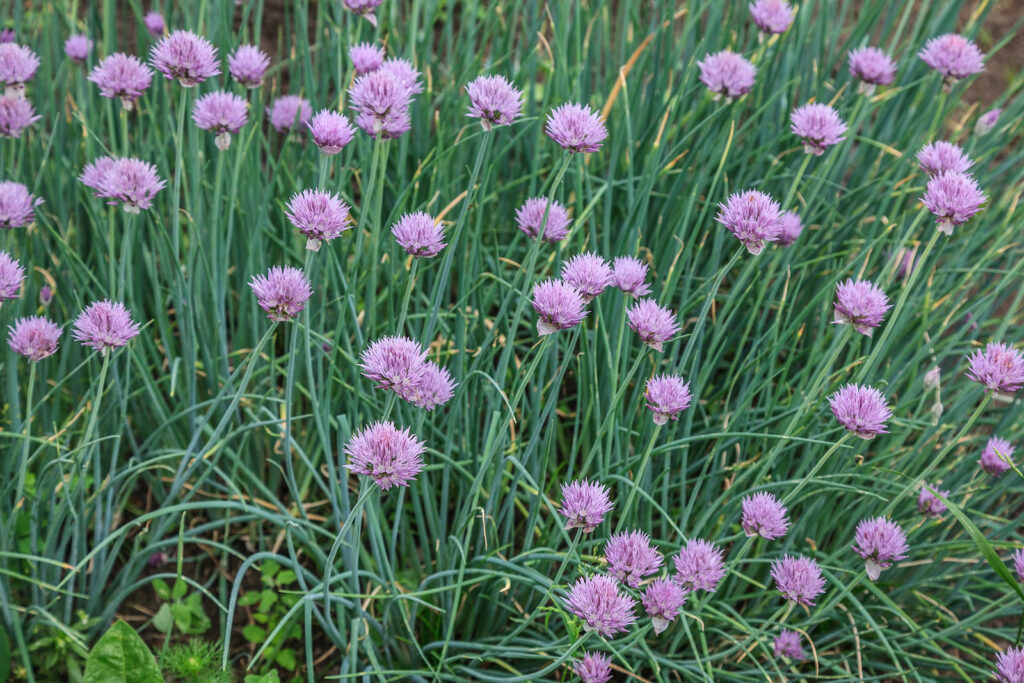
Allium spp., ornamental onions, 700 species. Blooms spring to summer. Zones 4-8. Grows 6 to 60 inches (15-150cm) tall depending on species. Clusters of star-shaped, often aromatic flowers; choose from blue, pink, red, violet, white, and yellow. Plant in autumn in humus-rich soil, full to partial sun. Use in borders, containers, cutting garden. Resists deer, insect pests, and disease.
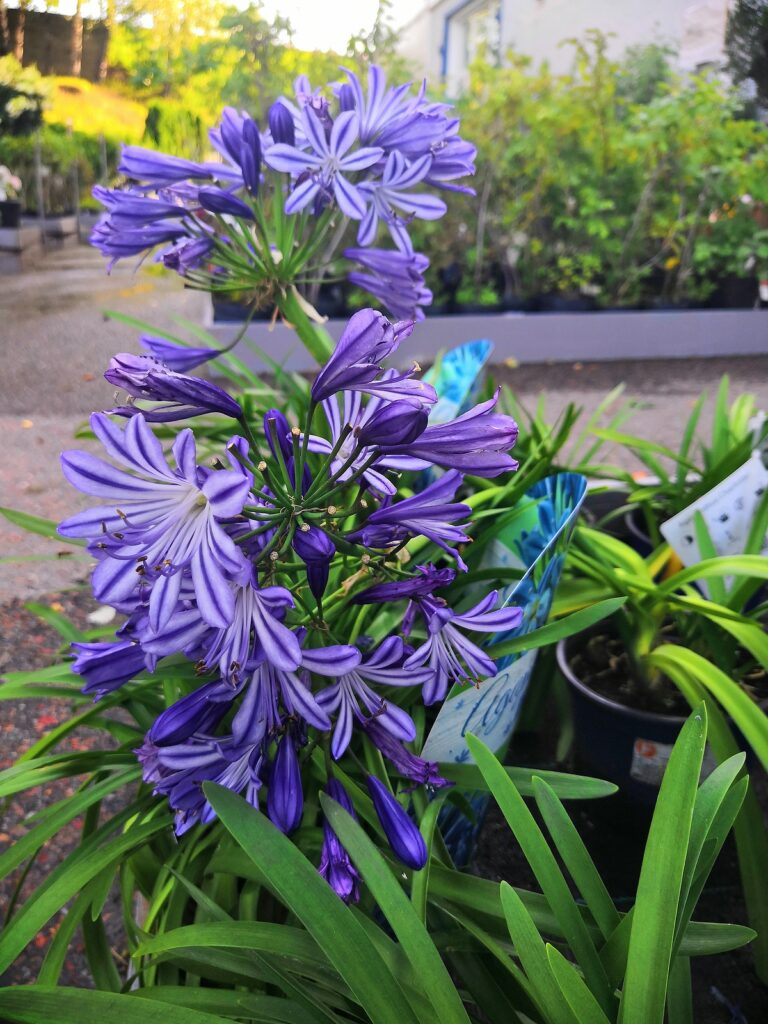
Camassia, camass, perennial. Blooms late spring. Zones 4-9. Grows 30 to 48 inches (75-120cm) tall. Stalks with tiered clusters of multiple, star-shaped, lightly aromatic flowers to 2 inches (50mm) wide; choose from blue, purple, and white. Plant in early autumn in humus-rich, well-drained soil, full sun to partial shade. Use in beds, borders, ground cover, and mixed planting. Susceptible to deer; resists insect pests and disease.
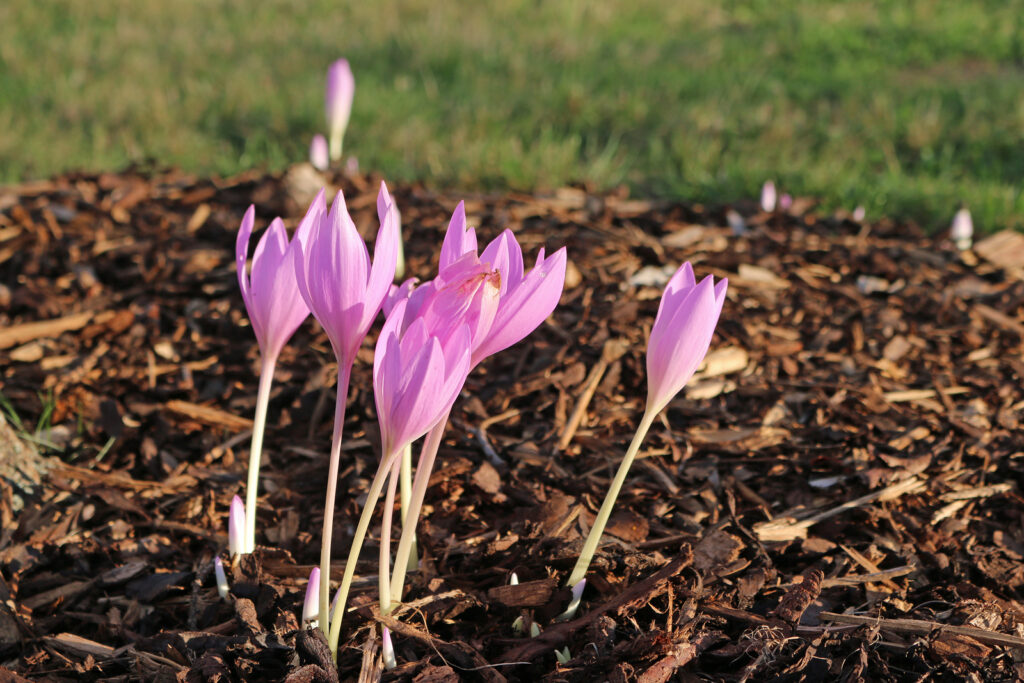
Colchicum autumnale, autumn crocus, meadow saffron, perennial. Blooms late-summer to early-autumn. Zones 4-9. Grows 4 to 12 inches (10-30cm) tall. Flared, crocus-like, single or double flowers to 4 inches (10cm) wide; choose from pink, purple, rose, and white. Plant in summer in loamy soil with good drainage, full sun. Use in borders and woodland gardens; naturalizes. Resists deer, insect pests, and disease.
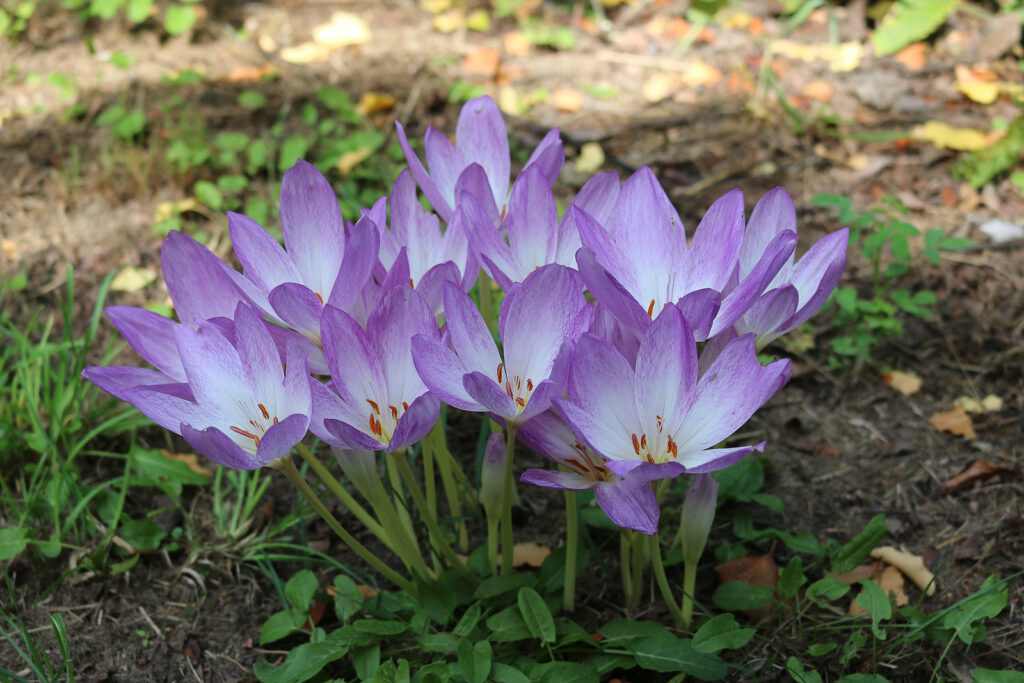
Crocus spp., spring crocus, 80 perennials. Blooms late winter to early spring. Zones 3-8. Grows 3 to 6 inches (75-150mm) tall. Short stems of solitary, cup-shaped, often aromatic flowers 1.5 to 3 inches (3.8-7.5cm) long; choose from purple, white, yellow, and striped. Plant in autumn in sandy loam with good drainage, full sun to partial shade. Use in beds, containers, edgings, massed plantings; naturalizes. Susceptible to deer. Resists insect pests and disease.
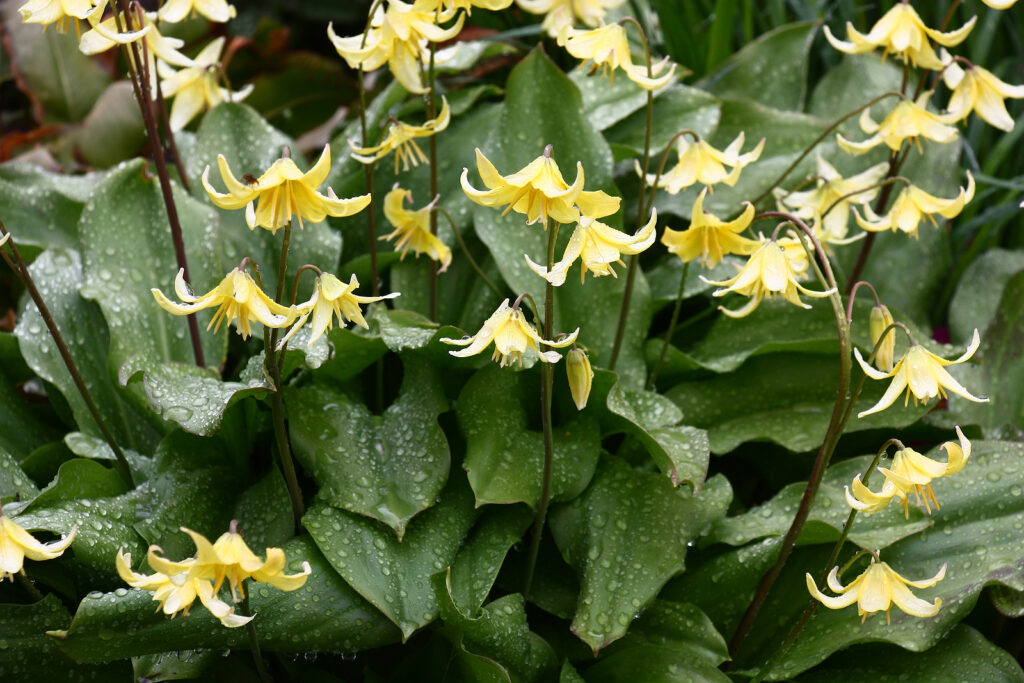
Erythronium pagoda, dog-tooth violet, 25 perennials. Blooms early autumn. Zones 7-9. Grows 4 to 24 inches (10-60cm) tall. Clustered, nodding, star-shaped, reflexed flowers to 2 inches (5cm) wide; choose from pink, purple, rose, white, and yellow. Plant in early autumn in sandy loam with good drainage in partial shade. Use in beds, borders, drifts, edges, and mixed plantings; naturalizes. Resists pests and diseases.

Fritillaria spp., checkered lily, perennial. Blooms in spring. Zones 4-7. Grows to 16 inches (40cm) tall. Spiking clusters of multiple, nodding, bell-shaped, aromatic flowers to 2.5 inches (7cm) long; choose from brown, pink, purple, violet, and white with variegated patterns. Plant in autumn zones 4-9, spring in zones 2-3; plant in sandy loam with good drainage in full sun to partial shade. Use as an accent. Resists deer, insect pests, and disease.
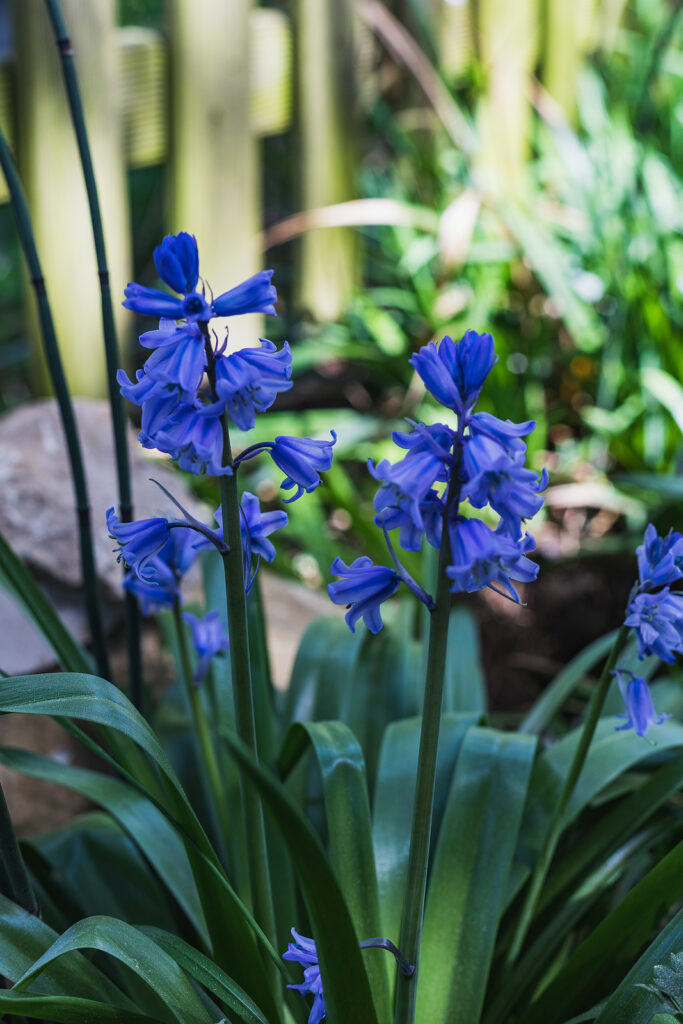
Hyacinthoides spp., wood hyacinth, perennial. Blooms in spring. Zones 5-9. Grows to 20 inches (5cm) tall. Lone stalks with vertical tiers of multiple, bell-shaped, aromatic flowers ¾ inch (19mm) long; choose from blue, pink, rose, and white. Plant in autumn in humus-rich, well-drained soil in full sun to partial shade. Plant in drifts; good cutting flower; naturalizes. Resists deer, insect pests, and disease.

Lilium asiatica, Asian lily, Asiatic hybrids. Blooms in early summer. Zones 3-9. Grows from 18 to 54 inches (45-137cm) tall depending on cultivar. Some cultivars have upward-facing flowers, while others have horizontal or drooping flowers in virtually every color except blue. Plant in autumn or early spring in sandy loam with good drainage; plant in full sun to partial shade. Plant as an accent or in containers; good cut flower; naturalizes. Susceptible to deer, beetles, leaf fungus, and mosaic virus.
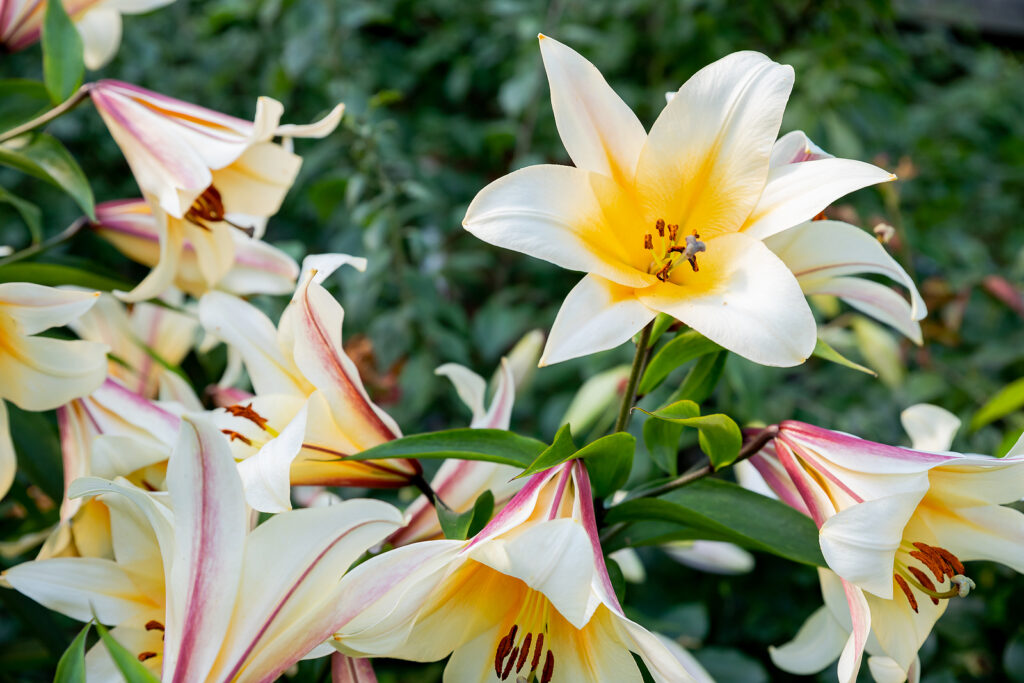
Lilium aurelian, trumpet lily hybrids. Blooms in midsummer. Zone 4-9. Easy to grow and reliable. Grows 3 to 9 feet (.9-2.7m) tall depending on cultivar. Trumpet- or bowl-shaped flowers are usually scented; blossoms range from white and cream to yellow and pink, many with green, brown, or purple shading. Plant in autumn or early spring in sandy loam with good drainage; plant in full sun to partial shade. Plant as an accent or in containers; good cut flower; naturalizes. Susceptible to deer, beetles, leaf fungus, and mosaic virus.
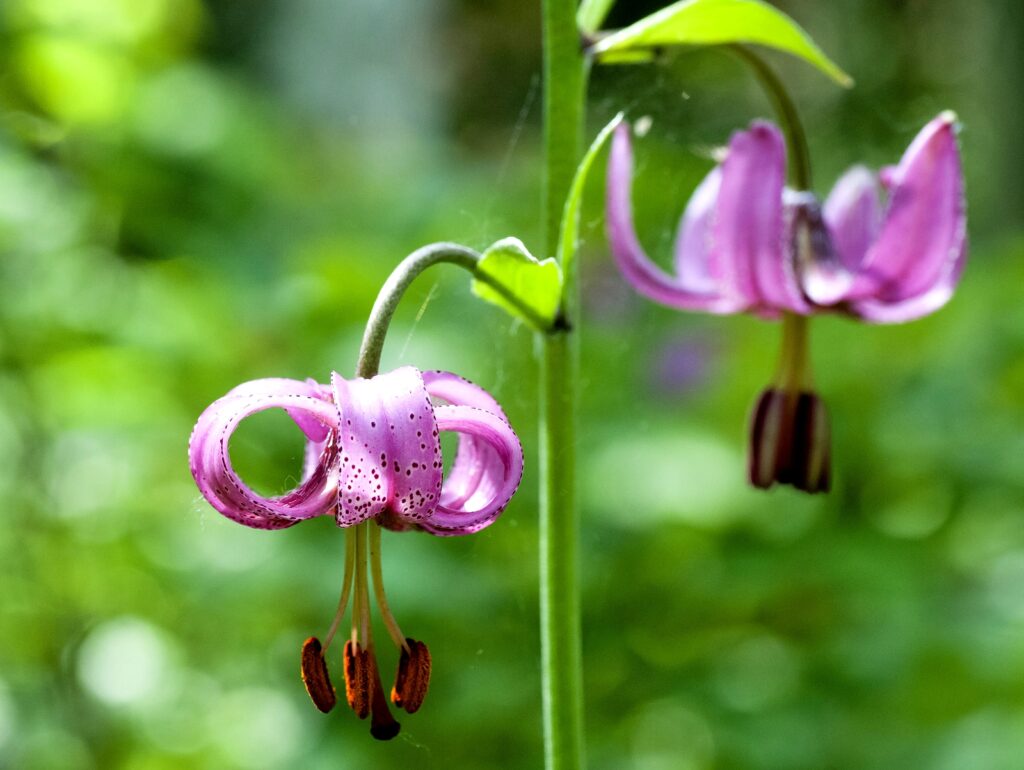
Lillium martagon, Turk’s cap lilies, Martagon hybrids. Blooms in early summer. Grows from 3 to 5 feet (.9-1.5m) tall depending on cultivar. Flowers curve back, strongly; colors are mostly in the wine red to orange to gold range. Plant in autumn or early spring in sandy loam with good drainage; grows best in filtered-sun. Plant as an accent or in containers; good cut flower; naturalizes. Susceptible to deer, beetles, leaf fungus, and mosaic virus.
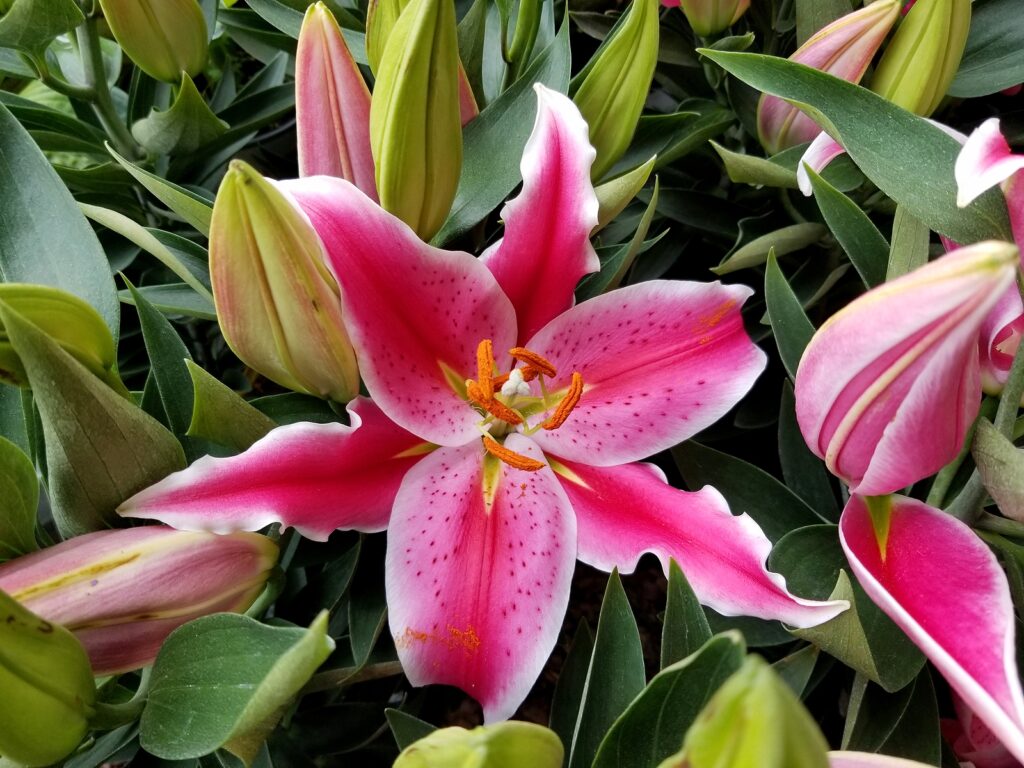
Lilium oriental, oriental lily, Oriental hybrids. Blooms in summer. Zones 4-9. Grows from 3 to 5 feet (.9-1.5m) tall depending on cultivar. Fragrant flowers of white or pink, often banded with gold or red on the center of each petal and spotted with red. Plant in autumn or early spring in sandy loam with good drainage; plant in full sun to partial shade, partial shade especially in hot regions. Plant as an accent or in containers; good cut flower; naturalizes. Susceptible to deer, beetles, leaf fungus, and mosaic virus.
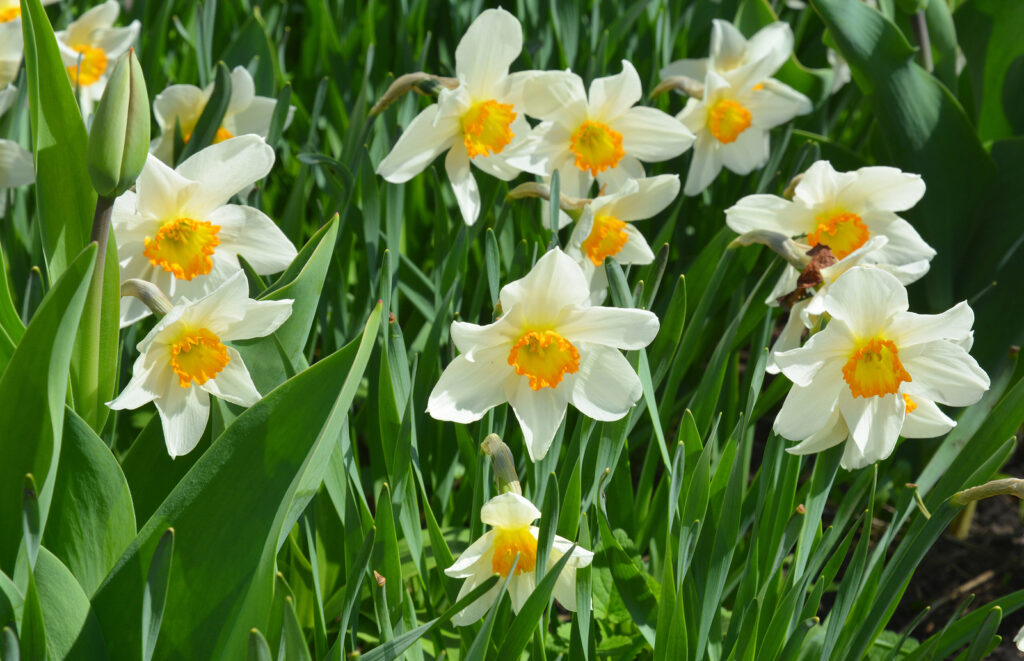
Narcissus, daffodil. Blooms in late winter to early spring. Zones 4-9. Grows 4 to 24 inches (10-60cm) tall. Lone or clustered single or double, trumpet-shaped flowers ½ to 2 (1.2-5 cm) wide, with smooth ruffed cups; choose from orange, peach, pink, red, white, yellow, and bicolored. Plant in autumn in sandy loam with good drainage in full sun to partial shade. Plant in beds, borders, containers, drifts, and slopes; good cutting flower; naturalizes. Resists deer.
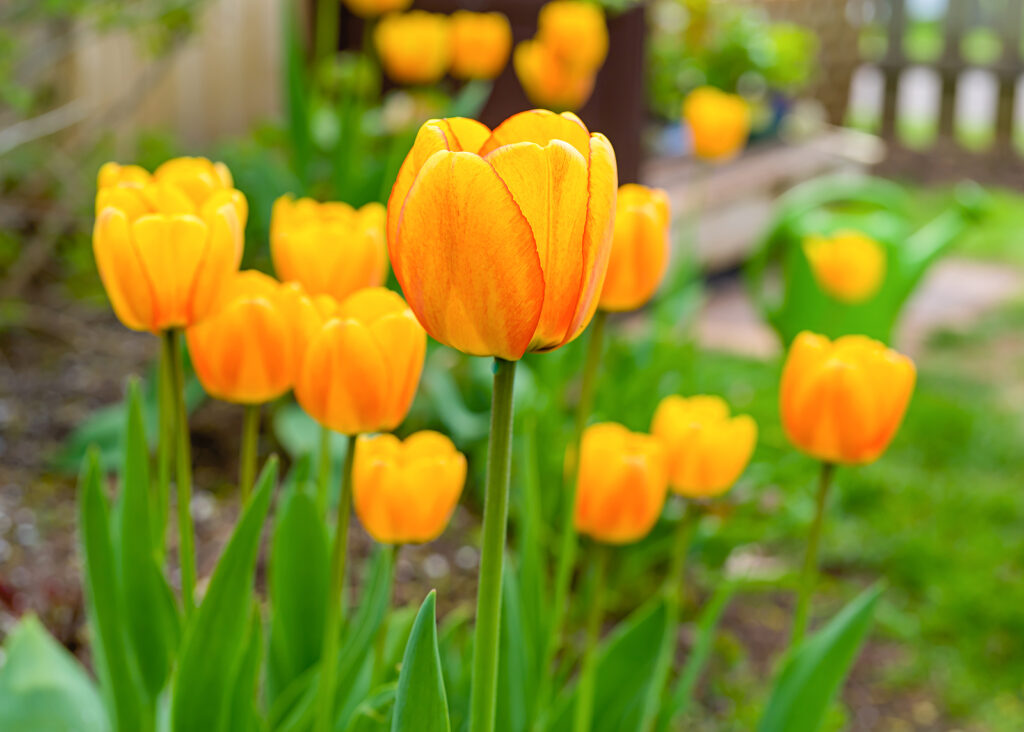
Tulipa spp., Tulip. Blooms in spring. Zones 4-8. Grow 5 to 14 inches (13-60cm) tall. Single or double, egg-shaped, sometimes aromatic flowers to 4 inches (10cm) wide with circular, smooth, or fringed petals; every color but blue, also multicolored. Plant in autumn or winter in sandy loam with good drainage in full sun to partial shade. Plant in beds, containers, mass plantings; good cutting flower; naturalizes. Susceptible to deer; resists disease.
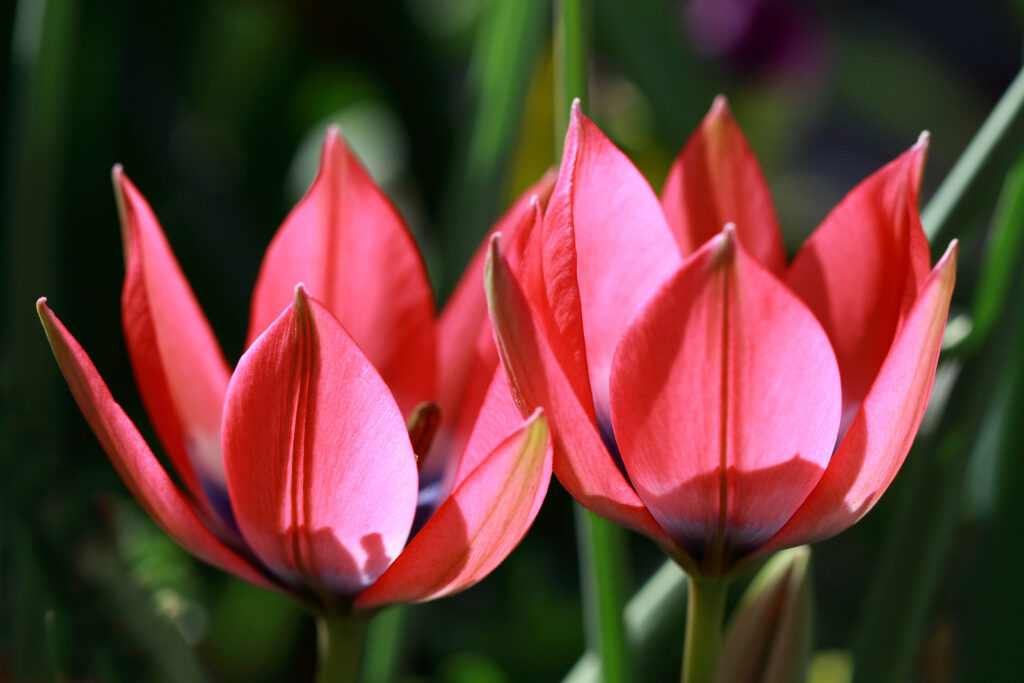
Sparaxis spp., wandflower. Blooms spring to early summer. Zones 7-10. Grows 24 inches (60cm) tall. Cup- or star-shaped, flared flowers to 2 inches (5cm) wide with contrasting centers; choose from orange, pink, purple, red, white, yellow, and bicolored. Plant in autumn in zones 9-10; spring in zones 7-8. Plant in sandy loam with good drainage in full sun. Plant in beds, borders, and containers; good cutting flower; naturalizes. Susceptible to deer; resists insect pests and disease.
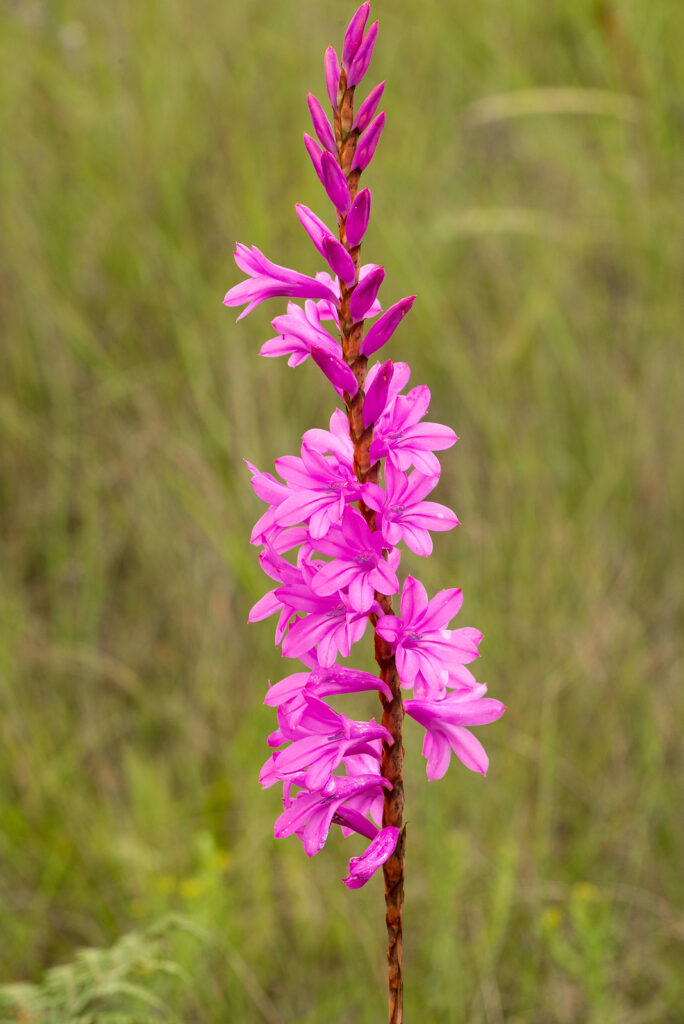
Watsonia, Bugle lily. Blooms in summer. Zones 7-11. Grows 24-72 inches (60-180cm) tall. Spikes of alternate, tubular, flared, flute-shaped, aromatic flowers, to 3 inches (7.5cm) wide; choose from apricot, pink, red, rose, and white. Plant in spring in zones 7-8; plant in autumn in zones 9-11; plant in loam with good drainage in full sun. Plant in beds and containers; good cut flower. Resists diseases; susceptible to aphids, slugs, snails.
Bulb Planting and Care Tips
- When buying bulbs, look for unblemished heavy bulbs with no soft spots; as a rule, the larger the bulb, the larger the flower. Avoid bulbs that have already sprouted. If you can’t plant right away, store the bulbs in an open paper bag in a cool, dry place.
- Bulbs grow best in beds well-prepared in advance. Spring flowering bulbs must be planted in autumn when cold-weather arrives; prepare the bed before winter freezes make the ground unworkable.
- Plant bulbs in well-drained soil with a pH of 6 to 6.8. Before planting turn the soil to a depth of 18 inches (45cm), add compost and peat or sand if the soil is heavy with clay.
- Most bulbs will grow in sun or light shade; bulbs planted in light shade often grow taller and last a bit longer.
- Add a bulb booster or bonemeal to the planting hole to improve the length of the bulb’s life. Feed bulbs with a 10-10-10 fertilizer; add a top-dressing of fertilizer on previous plantings as soon as shoots appear in spring.
- Bulbs look best clustered. Separate smaller bulbs by 2 to 3 inches (5-7.6cm) and larger bulbs by 4 to 6 inches (10-15cm). For a naturalized look, toss a handful of bulbs on the planting area then separate those that fall too close.
- As a general rule, plant a bulb twice as deep as its diameter; large bulbs can be planted slightly deeper.
- Once bulbs are set in place, firm in the soil, and water when the weather is dry.
- If squirrels or other critters begin to dig up bulbs, lay some chicken wire over the soil surface.
- Bulbs can be pre-planted in terra cotta pots and set in the ground fall; the container and bulbs can be removed after flowering; the empty spot can be filled with annuals.
- If the ground freeze over autumn planted bulbs, mulch with chopped leaves, or evergreen boughs to prevent extreme temperature fluctuations.
- When a bulb is done blooming, remove the flower stalk to avoid seed formation; this will allow the bulb to store energy. Wait until the leaves are brown before you cut them back. If foliage is slow to die back, cut the leaves down to 6 inches (15cm).
Also of interest:



